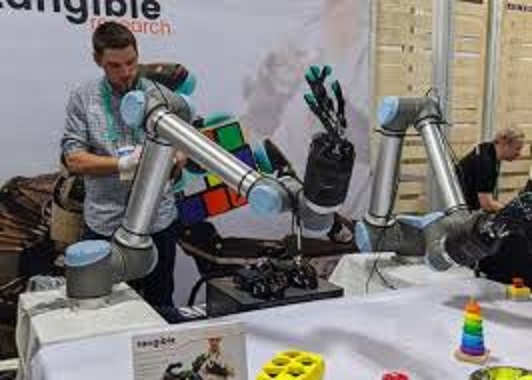Another medicinal robot made explicitly to take blood tests beat human social insurance experts in a clinical preliminary.
Robots are going to space, cleaning homes, working at lodgings, thinking about the old and giving gallery visits. Next, they could be working in emergency clinics and therapeutic facilities, drawing blood from human patients.
A mechanized blood-inspecting robot made by Rutgers University scientists proceeded also or, now and again, superior to anything human therapeutic experts doing likewise task, the college said Wednesday in an announcement.
The main human clinical preliminary of the blood-drawing robot showed that it could save time for medical attendants and specialists to invest more energy treating patients, rather than hitting them with needles.
The ultrasound picture guided robot finds the vein, punctures it with a needle and afterward draws blood. The robot additionally incorporates a rotator based blood analyzer.
- Boston Dynamics hands Spot the robot hound over to Adam Savage for preparing
- Meet Vyommitra, the legless female humanoid robot India’s sending to space
- See MIT’s Mini Cheetah reverse somersaulting robots play a mean round of soccer
The consequences of the preliminary, which were distributed in the diary Technology, indicated that the robot gadget had a “overall success rate of 87 percent for the 31 participants whose blood was drawn. For the 25 people whose veins were easy to access, the success rate was 97 percent.”
Past examinations have demonstrated that human services experts have a triumph pace of 73 percent in patients without noticeable veins, 60 percent in patients without tangible veins and 40 percent in gaunt patients, the college said.
“A device like ours could help clinicians get blood samples quickly, safely and reliably, preventing unnecessary complications and pain in patients from multiple needle insertion attempts,” Josh Leipheimer, the lead creator and a doctoral understudy at the Rutgers-New Brunswick School of Engineering, said in the college’s announcement.
Later on, the college stated, the gadget could likewise be utilized for other regular restorative systems, for example, IV catheterization and dialysis.
Disclaimer: The views, suggestions, and opinions expressed here are the sole responsibility of the experts. No Watch Mirror journalist was involved in the writing and production of this article.





